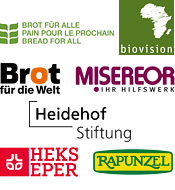News
21.08.2014
South Asia's agriculture at risk from climate change, report warns

South Asia will be severely affected by climate change within a few decades if no action is taken to counter global warming, the Asian Development Bank (ADB) warned on Tuesday. A new report predicts that six countries - Bangladesh, Bhutan, India, the Maldives, Nepal, and Sri Lanka - will see an average economic loss of around 1.8% of their gross domestic product (GDP) by 2050, rising sharply to 8.8% by the end of this century. Almost all areas of South Asia will suffer from rising temperatures. While farmers in some parts of the region may benefit from warmer weather, the overall impacts on agriculture are expected to be negative. By 2080, annual rice production could increase by as much as 16% in Nepal, but decrease as much as 23% in Bangladesh, Bhutan, India, and Sri Lanka. Changes in rainfall patterns could increase the likelihood of crop failures, posing a serious threat to food security. Agriculture is an important economic sector in the region, contributing 20% of Bangladesh's GDP and employing 48% of the labor force. India is also deeply at risk from climate change and could suffer economic losses of up to 8.7% of its GDP by 2100. “Agriculture provides employment and livelihood opportunities to most of India’s rural population and changes in temperature and rainfall, and an increase in floods and droughts linked to climate change, would have a devastating impact on people’s food security, incomes, and lives,” said Bindu Lohani, ADB Vice-President for Knowledge Management and Sustainable Development. The report also list adaptation and mitigation measures for South Asia. In agriculture, rice cultivation systems with improved water and nutrient use, more efficient irrigation, altering planting times and diversifying crops could help. According to the report, studies have shown that the system of rice intensification, which combines improvements in rice planting techniques and water application, can double or triple current rice yields.
19.08.2014
Earth Overshoot Day: Humans have exhausted natural resources for 2014

August 19th marks Earth Overshoot Day - the day humanity has used up the natural resources the world can supply in a year, according to data from Global Footprint Network, an international think tank. The date is calculated by contrasting the world’s demand on nature (ecological footprint) with the biocapacity - forests, pastures, cropland and fisheries as well as the planet’s ability to replenish resources and absorb waste, including carbon dioxide emissions. Earth Overshoot Day has moved from early October in 2000 to August 19th this year, showing that humans are exhausting natural resources such as land, wood, fibre and fish faster than ever. For the rest of the year, we will maintain our ecological deficit by living on resources borrowed from future generations. In 1961, humans used only around three-quarters of the capacity Earth has for generating food, timber, fish and absorbing greenhouse gases. According to the Global Footprint Network, we would currently need 1.5 Earths to produce the renewable resources necessary to support our footprint. Moderate population, energy and food projections suggest that humanity would require the biocapacity of three planets by 2050. „The interest we are paying on that mounting ecological debt in the form of deforestation, fresh-water scarcity, soil erosion, biodiversity loss and the build-up of CO2 in our atmosphere also comes with mounting human and economic costs”, the Global Footprint Network warns.
15.08.2014
UN warns of severe damage to agriculture in Gaza
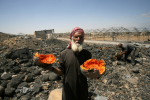
Israel’s military operation in Gaza has devastated local food production and made the population reliant on food aid, the UN's Food and Agriculture Organization (FAO) warned in a statement. The recent fighting has forced farmers to abandon their fields and has caused considerable damage to Gaza's 17,000 hectares of croplands. Agricultural infrastructure was also destroyed, including greenhouses, irrigation systems, animal farms, and fishing boats. “Up to now, ongoing military operations have prevented detailed assessments of damages to agriculture from being completed,” said Ciro Fiorillo, head of FAO's office in the region, but the recovery in the agriculture sector will definitely need long-term external assistance. According to the latest estimates, Gaza lost half of its poultry birds either due to direct bombardment or lack of water and feed resulting from access restrictions. Gaza’s fishing sector has also suffered extreme financial losses. The Gaza Strip imports large part of its food supply but local food production represents an important source of nutritious and affordable food and almost 30,000 people in Gaza rely on farming for their livelihoods. Food prices have risen considerably due to the fighting, with a 42% increase for potatoes and a 179% spike in the price of tomatoes since the onset of hostilities. The FAO estimates that almost the entire population of Gaza is currently dependent on food aid.
04.08.2014
WTO trade deal fails over India’s food subsidy concerns
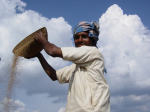
The World Trade Organisation (WTO) failed to reach a global trade deal after India’s refusal to ratify the agreement unless it included concessions allowing the country to subsidise and stockpile food. Consensus on the global reform of customs procedures had already been reached in Bali in December, but the deadline to sign the pact lapsed on Thursday at midnight after WTO members failed to reach agreement over India’s food subsidy concerns. Under its public food security programme India procures rice and wheat from farmers at above-market prices and provides subsidised food grains to the poor population. With current WTO norms, food subsidies are limited to 10% of the value of total agricultural production. However, the support is calculated at prices that refer to the base year 1986-1988 and do not take into account inflation and currency fluctuation. The Bali meeting came up with a “peace clause”: WTO members would not file complaints against India's food subsidies until a permanent solution was found by 2017. India declined last week not to sign the Trade Facilitation Agreement without a permanent solution to the food security issues. US Secretary of State John Kerry had pressed Indian officials to ratify the deal during a visit to New Delhi last week. Indian Prime Minister Narendra Modi said he was more concerned about the small Indian farmer: "The first responsibility of my government is to the poorest people of the country. While we don't oppose the agreement, we believe that the needs of those living on the margins of society, not just in India but elsewhere too, have to be addressed”, he told Kerry. The deal would have been the first global trade reform in two decades. Indian officials said they were willing to return to the table for new talks.
28.07.2014
45% decline in vital invertebrates in last four decades

The number of worms, spiders, butterflies and other invertebrates has declined by 45 per cent on average over the past 40 years, threatening food supplies, human health, and water quality. The study, published on Friday in the journal Science, reviewed past studies, and compiled a global index of all invertebrate species. The researchers found that, while the human population has doubled over the past four decades, 67 per cent of the world’s invertebrates have decreased in numbers by an average of 45 per cent over the same period. In the UK, for example, there has been a 30 to 60 per cent decline in the number of butterflies, bees, beetles, and wasps. “We were shocked to find similar losses in invertebrates as with larger animals, as we previously thought invertebrates to be more resilient,” said Ben Collen of University College London, a co-author of the study. The fall in invertebrate numbers is thought to be linked to the loss of natural habitats. “The richness of the animal world of our planet is being seriously threatened by human activities”, said lead author Rodolfo Dirzo, a process he calls “anthropocene defaunation”. The experts warn that the decline in invertebrates could have serious effects on ecosystems and food production. 75 per cent of the world’s food crops rely on insect pollination. Moreover, invertebrates contribute significantly to agricultural pest control. The cost of pest control without natural predators could amount to more than $4.4 billion dollars in the United States alone. Insects, spiders, and worms also play a decisive role in decomposition, ensuring soils contain nutrients that are needed for plant growth. Invertebrates are also important for the natural purification of water, the study said.
24.07.2014
Beef’s environmental impact 10 times that of other meat

Beef is around 10 times more damaging to the environment than any other form of livestock, according to new research published in the Proceedings of the National Academy of Sciences. The scientists from the US and Israel analysed how much land, water and nitrogen fertiliser was needed to produce dairy, beef, poultry, pork and eggs, using data from the US Department of Agriculture among other sources. They found that beef production required on average 28 times more land, 11 times more irrigation water, and 6 times more nitrogen per consumed calorie than other animal-derived calories. Cattle are also responsible for releasing five times more greenhouse gases. The environmental impact of dairy, poultry, pork, and eggs were mutually comparable. Even when pasture resources were excluded, beef still required far more land than other meat and dairy products. When compared to the three staple plant foods potatoes, wheat, and rice, the environmental costs of beef per calorie are even worse, requiring 160 times more land, 19 times more nitrogen and producing 11 times more greenhouse gases. One reason is that cattle make far less efficient use of their feed. While it has already been known that beef has a greater environmental impact than other meats, the researchers say that their study is the first to quantify the scale in a comparative way. By highlighting the meat product with the highest environmental resource burden, the authors wish to empower consumers to make dietary changes that mitigate some of these impacts. The results could also show government agencies the directions corrective legislative measures should ideally take, the authors said.
22.07.2014
UN working group adopts proposal for Sustainable Development Goals
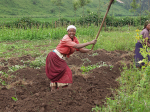
The UN General Assembly's Open Working Group on Sustainable Development Goals (SDGs) concluded its final session on Saturday, adopting the outcome document by acclamation. The proposal contains 17 goals and 169 targets which are to succeed the Millennium Development Goals, including 62 targets on means of implementation. After multiple readings and overnight negotiations, the delegates adopted the proposal on Saturday at noon. Goal 2 is to “end hunger, achieve food security and improved nutrition, and promote sustainable agriculture”. There was broad agreement on the first target of ending hunger by 2030 and ensuring “access by all people, in particular the poor and people in vulnerable situations including infants, to safe, nutritious and sufficient food all year round”. Target 2.2 is “by 2030 end all forms of malnutrition, including achieving by 2025 the internationally agreed targets on stunting and wasting in children under five.” While previously agreed language listed types of malnutrition, such as obesity and overweight, the final version omits this. However, it lists groups whose nutritional needs should receive special attention. Target 2.3 is to “double the agricultural productivity and the incomes of small-scale food producers” through secure and equal access to land, other productive resources and inputs, knowledge, financial services, and markets. Target 2.4 focuses on sustainable food production systems and resilient agricultural practices that increase productivity and production, help maintain ecosystems and improve land and soil quality. Many delegates stressed the need to include that productivity must be increased in a sustainable way. Target 2.5 is “to maintain genetic diversity of seeds, cultivated plants, farmed and domesticated animals and their related wild species”. The issue of food loss and waste, despite calls for a target under Goal 2, was eventually shifted to Goal 12 (Ensure sustainable consumption and production patterns). The target is to halve by 2030 per capita global food waste at the retail and consumer level, and reduce food losses along production and supply chains including post-harvest losses. The OWG’s proposal will now be submitted to the UN Secretary-General and the General Assembly for consideration at its session in September before intergovernmental negotiations will start. A summit in September 2015 is expected to adopt the final post-2015 development agenda.
17.07.2014
New study on the effects of glyphosate on soil organisms

Herbicides containing glyphosate can have negative side effects on soil organisms such as earthworms and symbiotic mycorrhizal fungi, according to a new study published in the journal Scientific Reports. Austrian scientists from the University of Natural Resources and Life Sciences Vienna (BOKU) investigated the effects in a model ecosystem using pots with soil, earthworms and arbuscular mycorrhizal fungi that were planted with white clover. They applied the weedkiller Roundup at the recommended doses as used in agriculture and private gardens. The scientists found that the herbicide significantly decreased root mycorrhization. Herbicide application also led to reduced earthworm activity; the earthworms were heavier and less active at the surface. Earthworms improve soil fertility because they redistribute organic material in soils and increase the soil penetrability for roots. Mycorrhizal fungi are also important components of ecosystems which help plants to absorb mineral nutrients. The scientists highlighted the need for further research into the side-effects of glyphosate-based herbicides on key soil organisms.
15.07.2014
New study: more antioxidants and fewer pesticides in organic crops
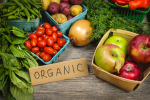
Organic food has more key antioxidants than conventionally-grown crops and lower levels of toxic metals and pesticides, according to new research from Newcastle University published on Tuesday in the British Journal of Nutrition. The study analysed 343 peer-reviewed studies, focussing on the compositional differences between organic and conventional crops. The researchers found that concentrations of antioxidants were between 18-69% higher in organic crops, an amount equivalent to one to two of the five portions of fruits and vegetables recommended for daily consumption. Antioxidants have been linked to a reduced risk of chronic diseases and certain cancers. The study also shows significantly lower levels of toxic heavy metals in organic crops. The concentration of cadmium was on average 48% lower than in conventionally-grown crops. “The organic vs non-organic debate has rumbled on for decades now but the evidence from this study is overwhelming - that organic food is high in antioxidants and lower in toxic metals and pesticides”, says Professor Carlo Leifert from Newcastle University, who led the study. Nitrogen concentrations were found to be 10% lower in organic produce, nitrate was 30% and nitrite 87% lower compared to conventional crops. Pesticide residues were four times more likely to be found in conventional crops than on organic food. The findings contradict those of a 2009 UK Food Standards Agency (FSA) commissioned study which said there were no substantial differences or significant nutritional benefits from organic food. The FSA study based its results only on 46 publications covering crops, meat and dairy. “The main difference between the two studies is time. Research in this area has been slow to take off the ground and we have far more data available to us now than five years ago”, explains Professor Leifert.
- Study: British Journal of Nutrition, page 1 of 18
- Cambridge Journals Blog: New study finds significant differences between organic and non-organic food
- The Guardian: Clear differences between organic and non-organic food, study finds
- Newcastle University: New study finds significant differences between organic and non-organic food
11.07.2014
OECD/FAO: Livestock and biofuels to grow faster than crop production

Global demand for agricultural products will increase steadily over the next decade although at a slower pace than in the past ten years, the UN Food and Agriculture Organisation (FAO) and the Organisation for Economic Cooperation and Development (OECD) said on Friday in a joint report. Cereals will remain central but diets will become richer in protein, fats and sugar in many regions of the world due to rising incomes and urbanisation. According to the Agricultural Outlook 2014-2023, livestock and biofuel output will grow at higher rates than crop production. Over the next decade, global meat consumption is expected to increase by 1.6% per year, resulting in more than 58 million tonnes of additional meat being consumed by 2023. Poultry will overtake pork as the most popular meat product. FAO and OECD estimate that around 160 million tonnes of additional feed will be needed by 2023. This will boost demand for coarse grains and oilseeds with production increasing by 20% and 26% respectively over the next decade. Global biofuel production is expected to increase by more than 50% trough the next decade, a slowdown compared to the previous 10 years when production more than doubled. Ethanol and biodiesel outputs are expected to reach 158 billion litres and 40 billion litres respectively by 2023. The FAO and OECD expect that prices of major crops will continue to decline over the next two years in response to bumper crops in 2013/14 before stabilising at levels above the pre-2008 period, but clearly below historical highs. This year’s outlook has a special focus on India, the country with the largest number of food insecure people. While Indians will remain largely vegetarian, diets will diversify and the consumption of milk and other dairy products will increase.
